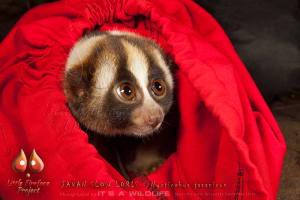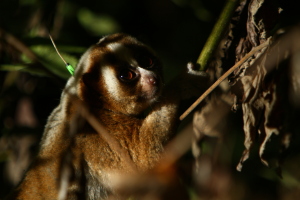With the recent onset of the wet season I’ve noticed a few changes in our lorises behaviour’. They seem to groom more, which is understandable after the torrential downpours! I’ve also seen a lot of exciting baby activity, they just seem to be popping up all over the place. Consequently I am looking into infant behaviour and dispersal in Javan Slow Lorises. To start off I’ve been making family trees, social webs and interaction charts finding out whose who and can now see what a tight knit Loris Community we have here in West Java. Despite the large number of lorises we follow and the regular un-collared lorises we find throughout most territories, all of our animals are linked in some way, which is great fun to study.

We have everything from mothers and fathers, sons and daughters to new boyfriends and girlfriends amongst our focal animals and due to the long study period we can follow them throughout different life stages. We are watching the progress of newborns through their dispersal and have a front row seat as they eventually find territories and mates of their own. For example one of our slow lorises, Lucu, is the daughter of Charlie, a loris with one of the highest elevated territories we have. Lucu has now dispersed and traveled all the way down right next to the village and is now settling in with boyfriend Pak B. We have other individuals we’ve followed from birth such as Dali who is still a sub-adult and as he grows up we are already able to see him interacting with his mum’s newest baby and it’ll be exciting to track his dispersing journey. Alomah (son of One Eye) seems to be in the process of dispersing and is often found waking up with Azka or One-Eye. Maya and Fernando, young lorises themselves, have recently been seen foraging together and Fernando was seen with a very small, and very fluffy, baby so we’ll be keeping a close eye on this new family!

Despite having long been considered as solitary it appears that these mysterious primates have quite the social life and as this project progresses I’m hoping to be able to find out about it in more detail – what age they weaned, what age do they begin to disperse, how far do they disperse, what are the barriers – if any, do they disperse with a new mate or meet a new one there? So many questions, so little time!
Jess Wise
Student Volunteer
